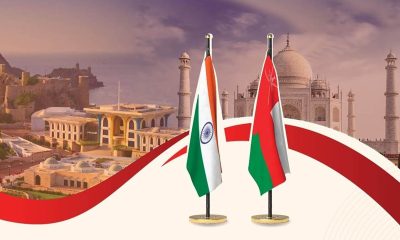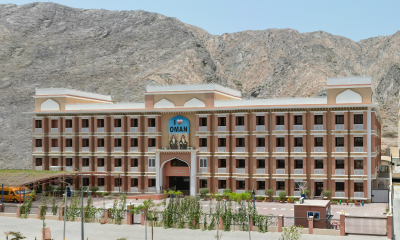Uncategorized
Predicted winners and losers in Asian equities
Asian stock markets returned thrice (India, China, Pakistan, Indonesia) or twice (Sri Lanka, Philippines, Taiwan, Thailand) the 14 per cent total return of the S&P 500. It was impossible not to make money in Asian equities in 2014.

Malaysia is my predicted “ugly” in Asian equities, while India is my predicted “good” market.
Asian stock markets returned thrice (India, China, Pakistan, Indonesia) or twice (Sri Lanka, Philippines, Taiwan, Thailand) the 14 per cent total return of the S&P 500. It was impossible not to make money in Asian equities in 2014. However, the macro investment climate in 2015 is more problematic. Valuations, political risk, a Wall Street correction, offshore capital flows and commodity price falls mean Asian equities will range from the good, the bad and the ugly!
I believe the Malaysian stock market and the ringgit are both overpriced against the dollar. Malaysia is the only crude oil exporter in Southeast Asia and the second largest LNG exporter in the world. Malaysia is also dependent on currency exports to China. This means a major increase in current account and budget deficits. Najib Razzak’s government will be forced to cancel infrastructure projects. Malaysian earnings growth was flat at $100 Brent. At $48 Brent, earnings could fall 5 – 8 per cent. This means the KLCI could fall to 1680 and the Malaysian ringgit to 3.8 against the US dollar.
If Malaysia is my predicted “ugly” in Asian equities, India is my predicted “good” market. India was up 34 per cent for Gulf investors in 2014 but is still not expensive at 15 times forward earnings. RBI rate cuts have begun as the crash in oil prices means a fall in consumer inflation. Structural, supply side reforms will boost the GDP growth rate above 6 per cent, the mission of Modinomics. EPS growth will be at least 15 per cent and return on shareholder equity metrics have begun to rise from post Lehman lows. Indian vehicle makers (Maruti Suzuki, Mahendra) and banks (ICICI, HDFC Bank) are obvious beneficiaries of RBI rate cuts. The Indian rupee has the best carry/volatility ratio in Asia as inflation falls. Nomura has a 35000 year end 2015 target on the Sensex.
China’s economic model is dangerously flawed. Economic growth has fallen to 24 year lows, below the Politburo’s GDP growth target of 7.5 per cent. The Communist Party will not share its monopoly of power or dismantle its 143,000 state owned enterprises. Excessive reliance on overinvestment, currency manipulation, subsidized exports, trillion dollar “shadow banking” credit lines and manic speculative construction that lead to “ghost cities” is simply not sustainable. The Chinese securities regulator’s crackdown on errant brokers led to a seven per cent meltdown in Shanghai shares in mid January. No wonder ICBC, Agricultural Bank of China and Bank of China all fell by the daily price limit of 10 per cent. China’s SOE, quasi-banks and local governments are dangerously leveraged and a credit/property/banking crisis will devastate growth.
Beijing will not allow rampant retail speculation in the stock market. Shanghai’s 50 per cent rise since last June was a hull run driven by a spike in speculative margins. After all, Chinese economic growth, corporate profits and industrial production are all in deep decline. I see no value in Shanghai equities now trading at an unjustifiable 25 per cent premium to Hong Kong. Chinese shares are expensive, hyper-volatile, leveraged and vulnerable to a steep sell off. I was bullish China in 2014, the Year of the Horse. I am bearish China in 2015, the Year of the Goat. Thailand was a winner market in 2014 after the military coup overthrew Yingluck Shinwatra in May 2014. Yet Thailand’s GDP growth rate cannot accelerate without a rise in consumption and exports. The central bank in Bangkok has cut its 2015 GDP forecast to 4 per cent as export growth is hit by weaker demand in China, Japan and the EU. Political risk will rise in Thailand once martial law is lifted.
The Philippines under President Benigno Aquino has the strongest sovereign credit upgrade cycle in Southeast Asia, anchored by a current account surplus, 6 per cent plus GDP growth, sovereign spread compression, peso strength and $23 billion in remittance from the Filipino diaspora. However, the Philippines now trades at 21 times earnings. Manila is too expensive at these valuation metrics.
South Korea has been one of the cheapest stock markets in Asia at 9 times earnings and the KOSPI barely trades above book value. However, the 50 per cent depreciation of the yen is a competitive nightmare for South Korea’s export oriented conglomerates, whose low dividend payout policies also discourages foreign investors. However, with the KOSPI just above 1900, Samsung Electronics and Hyundai Motors have appeal to value investors since the South Korean economy benefits hugely from the crash in oil prices, with energy imports 15 per cent of GDP, among the highest such ratios in Asia. Despite the military campaign against the Taliban in North Waziristan, horrific terrorist attacks like the Peshawar school massacre, power cuts and Imran Khan’s political protests, Pakistani equities returned 32 per cent in US dollars in 2014 and the Pakistani rupee actually appreciated against the US dollar. Pakistan is still cheap at 8 times earnings.
Even though the election of Joko Widodo as President of Indonesia led to a huge rally in 2014, I believe Jakarta is now overvalued at 3 times book value. A political corruption scandal and the rupiah’s slide to 1997 lows means this is no time to buy Indonesia. The election of Syriza, the Houthi takeover in Yemen and Russia’s sovereign credit rating cut to junk means risk aversion will hit Jakarta.
-

 Banking & Finance2 weeks ago
Banking & Finance2 weeks agoOman Oil Marketing Company Concludes Its Annual Health, Safety, Environment, and Quality Week, Reaffirming People and Safety as a Top Priority
-

 Economy2 months ago
Economy2 months agoMaal Card: What Oman’s New National Payment Card Means for Everyday Users
-

 News2 months ago
News2 months agoSheikh Suhail Bahwan, Chairman of Suhail Bahwan Group, Passes Away
-

 News1 month ago
News1 month agoOIG Appoints New CEO to Lead Its Next Chapter of Excellence
-

 Economy2 months ago
Economy2 months agoOman Unveils Official Omani Rial Symbol in Landmark Move to Boost Global Currency Presence
-

 News1 month ago
News1 month agoReport: How India & The Middle East Are Exploiting Immense Economic Synergies
-

 Uncategorized1 month ago
Uncategorized1 month agoOman’s ISWK Cambridge Learners Achieve ‘Top in the World’ and National Honours in June 2025 Cambridge Series
-

 Trade1 month ago
Trade1 month agoConsulate Office of the Republic of South Africa opens in Muscat, enhancing bilateral relations




























You must be logged in to post a comment Login